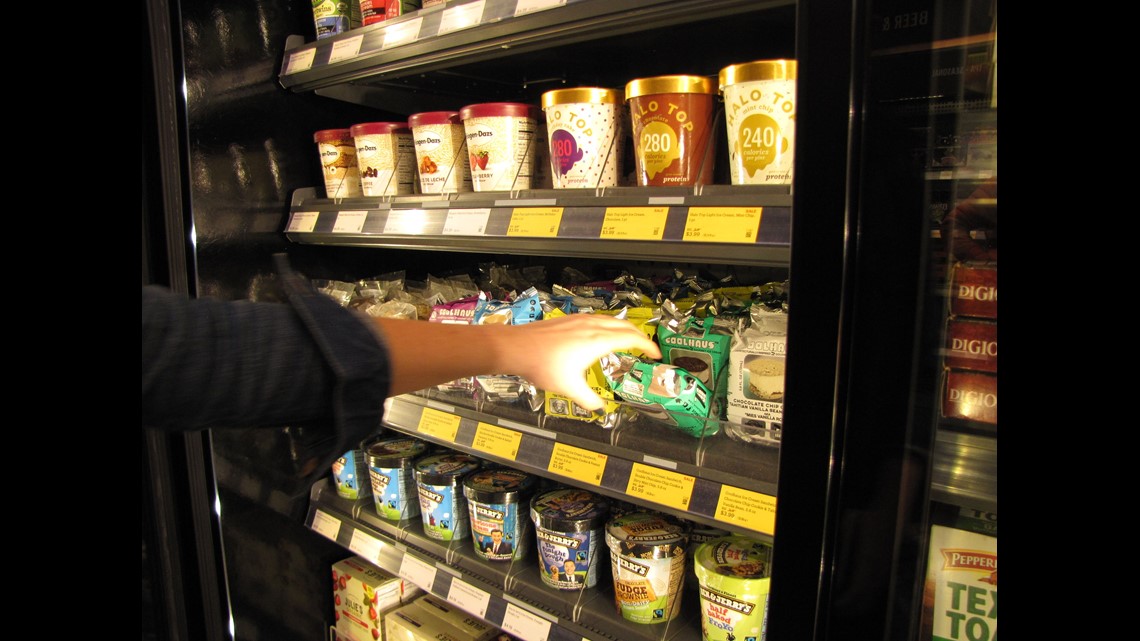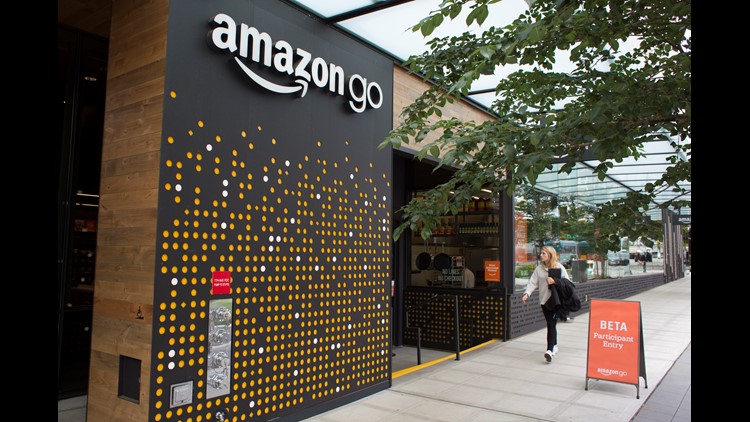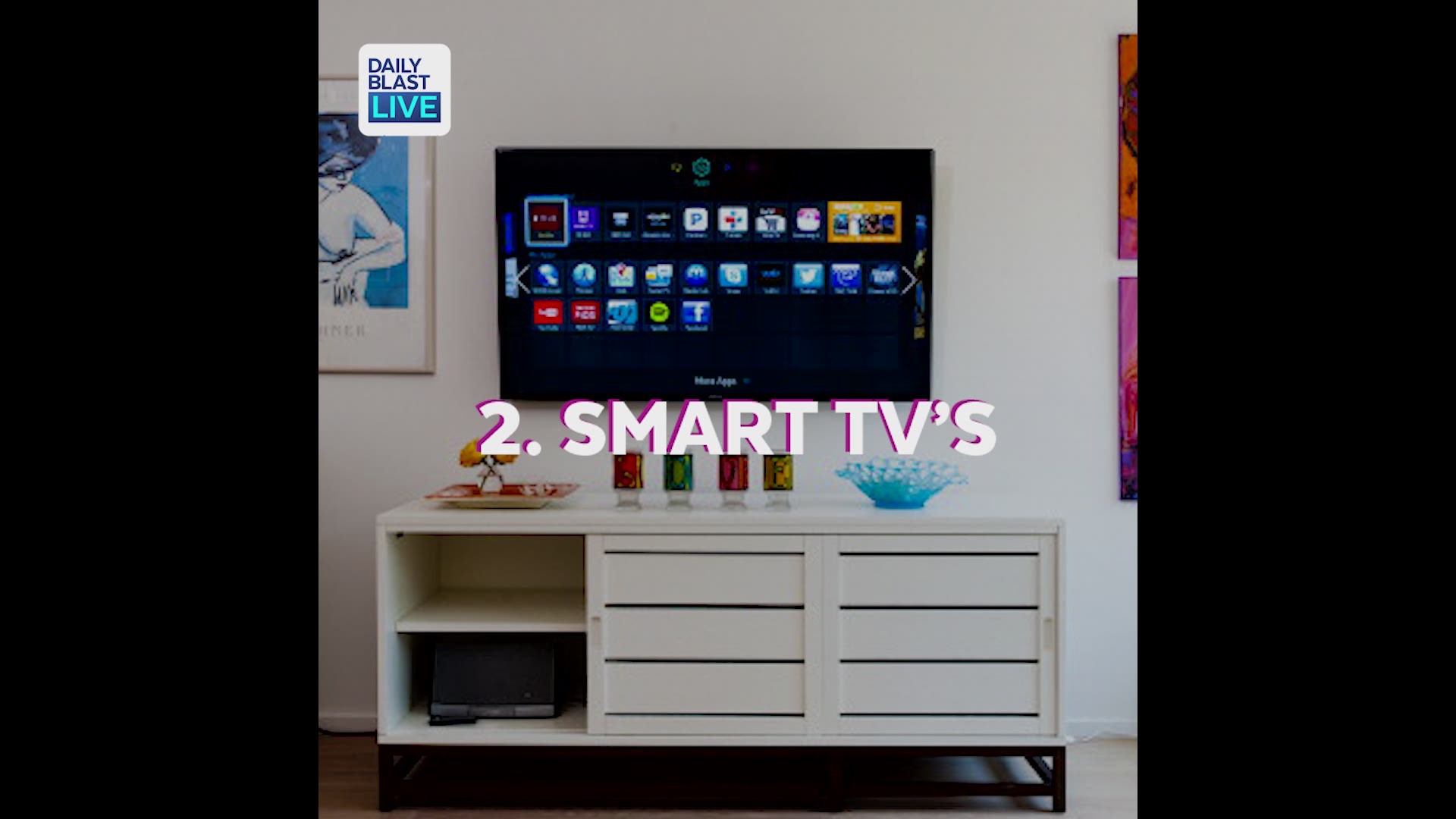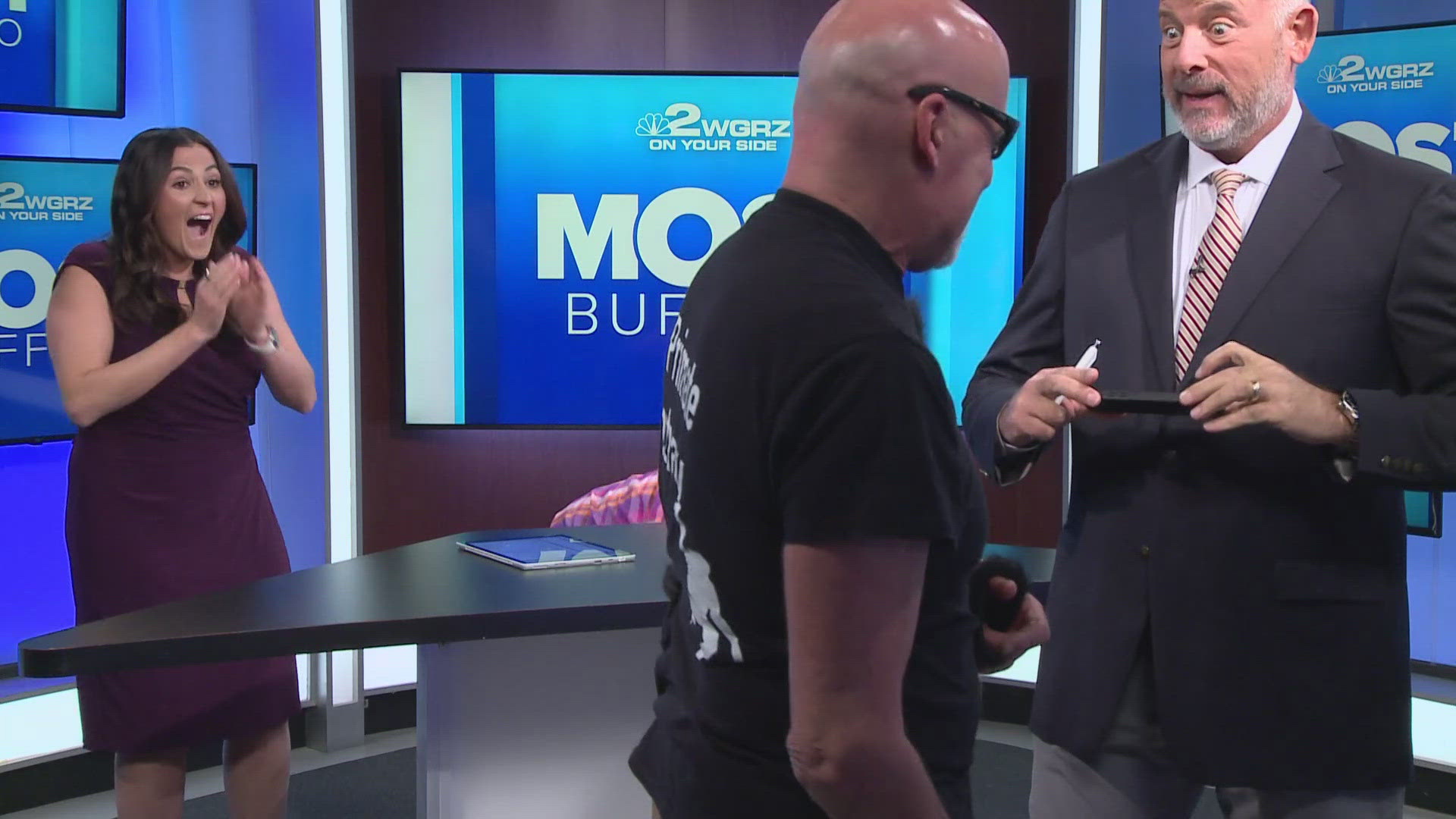After a year of testing with its own employees, Amazon plans to open its store that lets you browse, grab and walk out — skipping the checkout line, but not the bill — to the public Monday.
The convenience store and its proprietary technology, made up of hundreds of cameras and sensors and requiring a new Amazon app, dangled the promise of solving a bedrock complaint for shoppers — long checkout lines — when it was unveiled just over a year ago.
The high-tech approach, crafted by the company that's most visibly changed how Americans shop in recent years, suggested grocery shopping was on the cusp of its biggest breakthrough since bar codes.
The change spurred by Amazon Go may be more gradual than that. The technology behind it, called Just Walk Out, is proprietary and Amazon is expected to keep its details secret while it tests it on a small but more varied customer set than the Amazon employees who've been using it. It was originally scheduled to open to the public in early 2017 but was delayed in part due to the complexity of the technology.
If it succeeds, it stands to live up to those early expectations of a revolution in grocery shopping. The ability to walk into a store, grab what you want and simply walk out is remarkably freeing, though it can leave a slight nagging feeling that you've just shoplifted — until you check the app to make sure you've been charged.
"This is the definition of disruption. This is Netflix replacing Blockbuster, this is Uber replacing taxis," said Brendan Witcher, principal analyst with Forrester Research, who shopped in the store last week.
Critics note the disruption could also end up meaning fewer jobs as lines of checkout clerks give way to smart stores that do their own checking out.
The technology comes as huge changes are already rocking the grocery business, including Amazon's purchase of Whole Foods, plus rising numbers of customers who want to order online and have their groceries delivered and shifting tastes that have pushed stores to stock more organic and locally-grown items.
But in the 100 years since the first modern supermarket was opened, no one has ever solved the problem of long lines at checkout.
"Seventy-three percent of consumers we've surveyed say one of the things they most want from a company is that it values their time. Amazon Go does that," said Witcher.
To shop in the store, which is about the size of a 7-Eleven, customers must first download the Amazon Go app and link it to a payment method. Then they open the app on their phone and scan it at the four turnstiles to enter the 1,800 square foot store.
Once inside, cameras in the ceiling, sensors on the shelves and a massive amount of computing power track every item they pick up and what goes into their pockets or bags.
As they move through the store, each item is added to their digital tab. If they pick something up but then put it back, the store knows it and removes the item from their virtual shopping basket.
To check out — there's a reason it's called Just Walk Out technology. You just walk out.
"The store knows you're leaving and it tallies up your items and charges your account," said Gianna Puerini, vice president for Amazon Go.
The company has no plans to open any more Amazon Go stores or export the technology for the time being, despite intense interest from the public. Even when it was only open in beta mode for staff, tourists stopped occasionally to snap photos of the bright orange "beta participant" sign and peer in the windows.


The last year has been about working the kinks out of the system as Amazon staffers shop. Now that it will be open to the general public, the goal is to learn more about how to make it work for everyone, said Puerini.
"We want it to be effortless and magical," she said.
Amazon's been working on the technology for five years, an investment of time and money that Witcher doesn't think any other retailers would be able to make, and he expects Amazon to hold it close for a long time.
"The smart move is to make this Amazon-only. What an amazing service, to be able to remove something that's been a huge pain point for consumers. " he said.
He also doesn't expect it to show up in Whole Foods stores, the high end grocery chain Amazon bought last year.
A large, full-service supermarket, which typically carries around 38,000 items, would be a very different and difficult problem from the small size and limited selection offered at Amazon Go. "This works in a special type of format and a special store," he said.
What it's like
The interior of the Amazon Go store looks pretty much like any higher-end convenience store. When you walk in there's a wall of chilled beverages and another of chocolates and other snack items, many organic or vegan.
They sit on shelves that look no different than any other store shelf, though perhaps a tad cleaner. But they're full of hidden sensors that note when an item's been removed or when it's been put back.
Above, hundreds of cameras, painted matte black to blend in with the ceiling, are trained on every potential space, capturing movement.
One difference in the selection is that there are no individual pieces of fruits such as apples or bananas and no items that vary in weight or size.
Ready-made sandwiches, salads and other items come in plastic containers, a small subset of which are tagged with a dot-based readable system similar to a bar code that in some cases help the Just Walk Out Technology identify products.


Items of the same kind, such as a certain kind of salad, all weigh and cost the same amount. That way the technology only has to know the customer grabbed a tabouli salad, not which specific tabouli salad container they chose.
The store also offers a basic lineup of grocery items, including milk, condiments, coffee, tea, toilet paper and the like. In the back, a small wine and beer corner is presided over by an Amazon staffer who checks ID.
A popular item among Amazonians — or Amazon staff —is a wall of ready-to-cook meal kits. They offer everything needed to cook a dinner for two in 30 minutes. "People grab them on the way home," said Puerini.
The store is relatively small, and can only hold 97 people including the associates who stand ready to help customers, stockers and the staff in the attached kitchen who make up salads and sandwiches, she said.
For Amazon, the space offers an unparalleled chance to gather customer data about likes, dislikes and even what people pick up and then put back, all which can be crunched and turned into future stocking decisions.
For the public, at least at first, Amazon Go could well become another "must-see" for those visiting Seattle, along with riding the monorail and a trip to the Pike Place Market.
How possible hordes of new customers will interact with Amazon staff now used to grabbing a fast lunch remains to be seen. Puerini admits that among a few staffers it's become a bit of a game to see just how quickly they can pop in and then out with their noontime repast.
Some of the trip times are down to a minute, she says.
But after a year of getting ready, they're eager to see how the technology works with the public.
"We welcome them with open arms," she said.
And, likely, long lines, at least to start.




